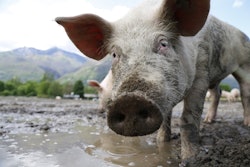
FBN Raises 2019 Corn Yield Objective To 168.1 BPA
On Sep. 25, FBN released our sixth quantitative-driven corn yield assessment of the 2019 growing season. FBN’s corn yield model uses crop condition metrics, weather/hydrological inputs, satellite imagery and crop development as input values.
Using these input values, FBN is predicting a +1.4 BPA increase in national corn yield from 166.7 BPA to 168.1 BPA.
USDA’s September WASDE estimates a 168.2 PA yield for the 19/20 crop year.
FBN’s model structure illustrates that a lack of extreme temperature weather values throughout August and September combined with a lack of frost developments have helped stabilize the crop and reduce yield-related penalties.
FBN’s Take On What It Means: We believe that our recent corn yield of 168.1 BPA shows a stabilizing national corn crop. While there is a long way to go before the corn crop is fully harvested, we believe that the weather during September was beneficial for a crop that saw numerous early season challenges. While the maturity of the corn crop is behind, we believe that this stabilization should help guide and force decisions about how the 19/20 corn crop is marketed.
U.S. and Japanese Trade Deal Positive for U.S. Farmers
On Monday, Sep. 23, President Trump and Japan’s Prime Minister Shinzo Abe signed a trade-enhancement agreement that will lower agricultural tariffs in Japan, industrial tariffs in the U.S.
Japan will lower tariffs on about $2.9 billion of beef and pork, and eliminate tariffs on $1.3 billion of goods including almonds, certain fruits/nuts, and sweet corn.
Japan is a key export market for US corn, pork and beef.
Lower Japanese agricultural tariffs would allow U.S. farmers to better compete in Japan.
FBN’s Take On What It Means: We believe that the trade deal signed between Japan and the U.S. is a much needed win for the U.S. farmer. Reducing trade tariffs and related barriers can help increase export opportunities and Japan is a large and critical export market for U.S. agricultural commodities.
The risk of trading futures, hedging, and speculating can be substantial. FBN BR LLC (NFA ID: 0508695)










